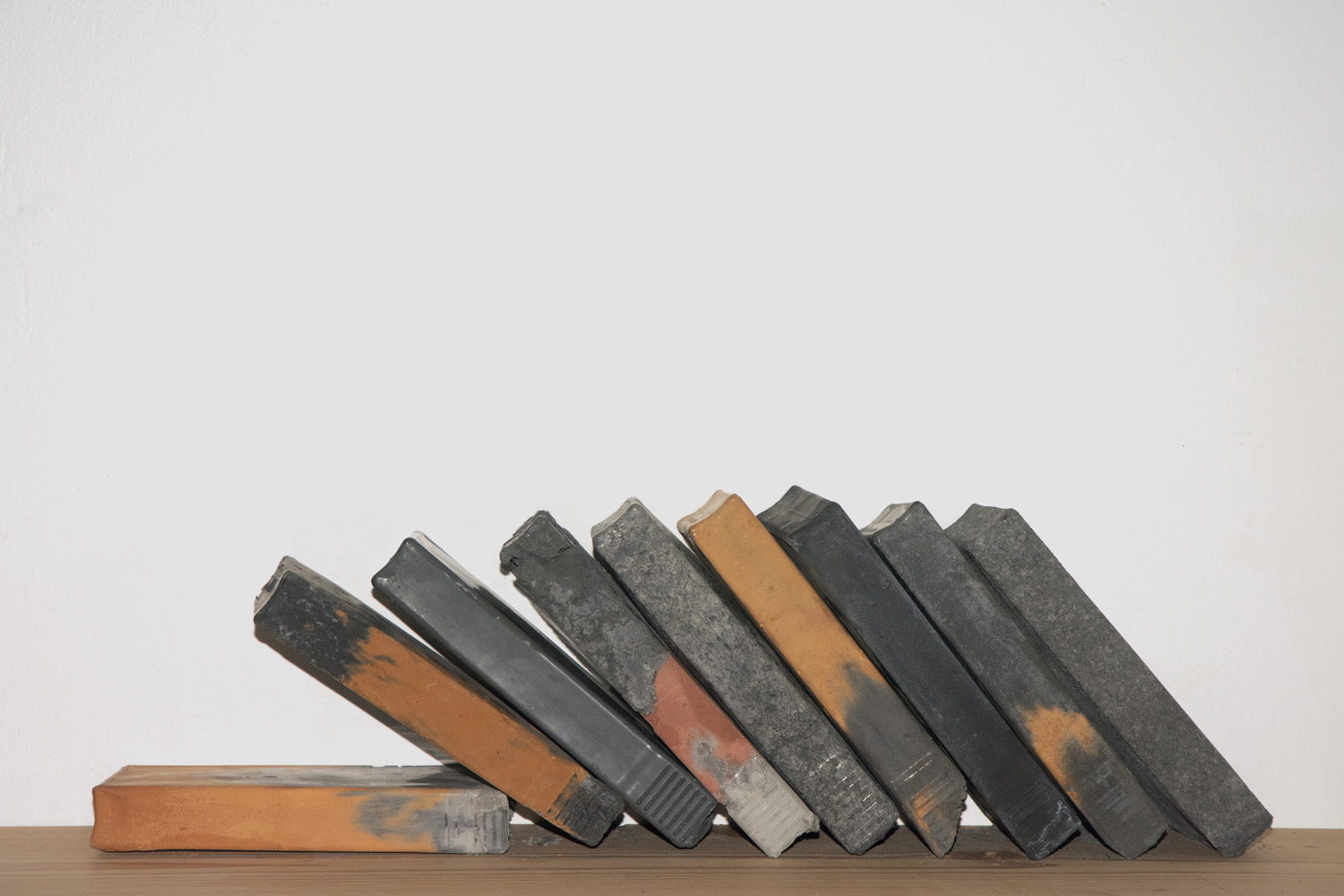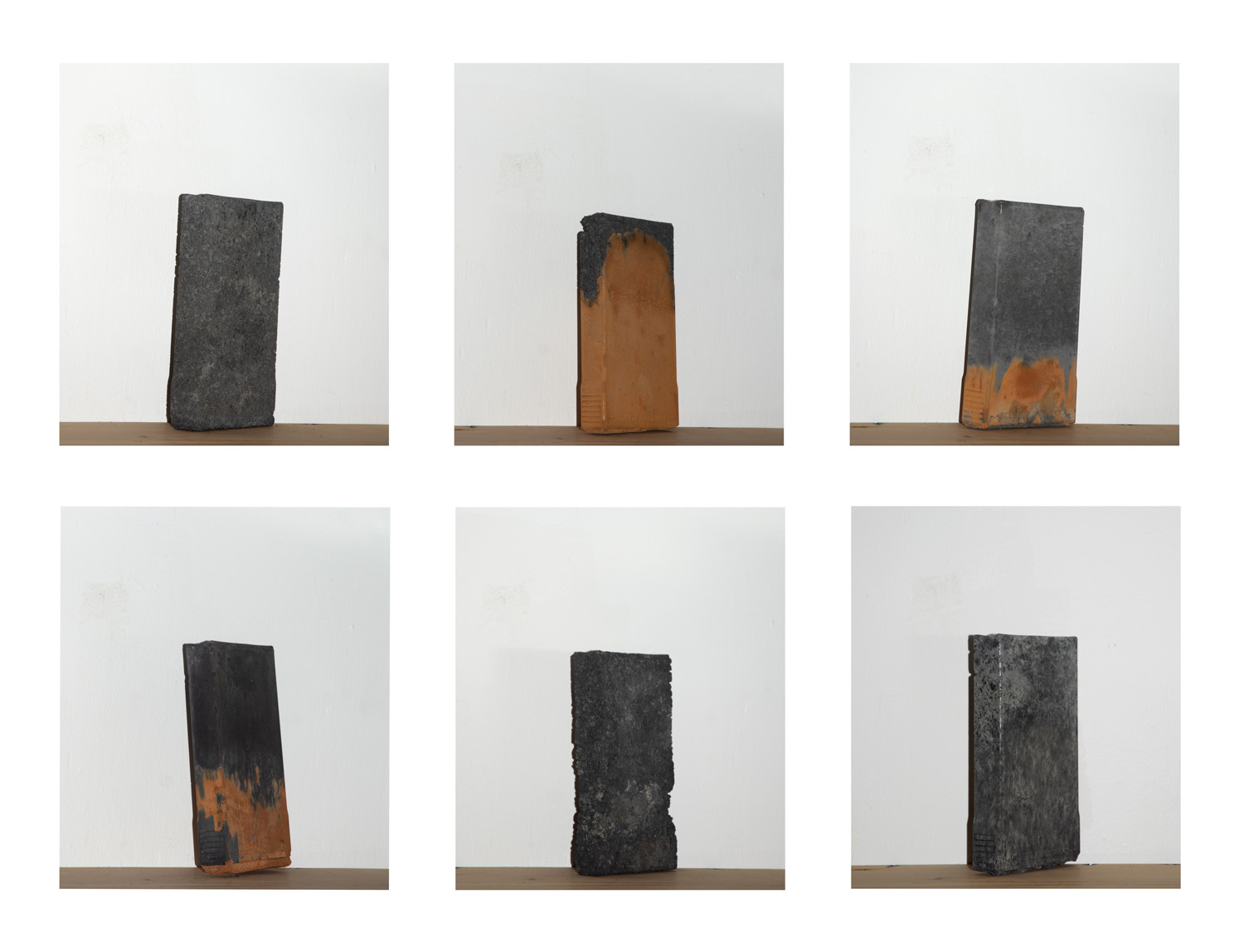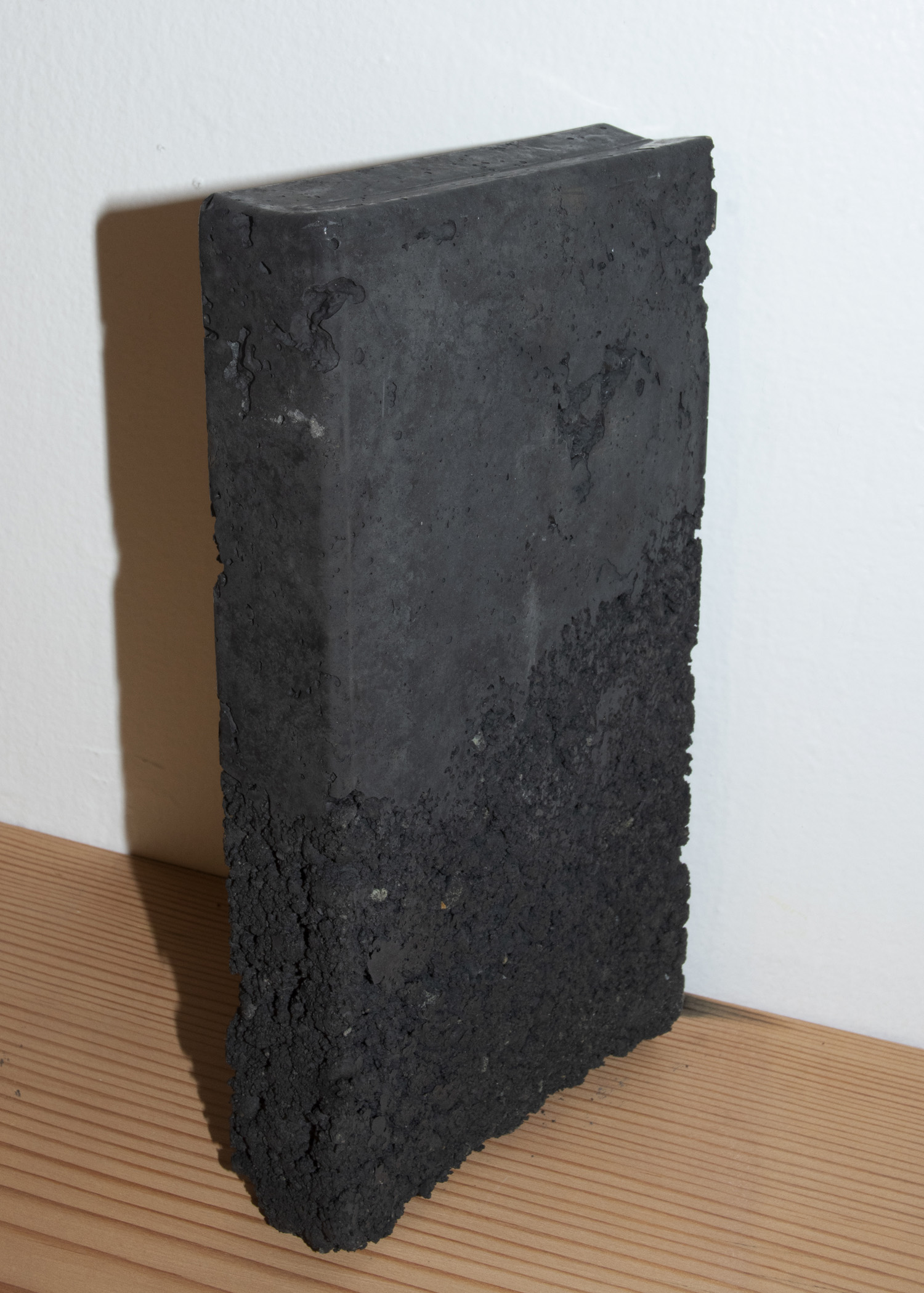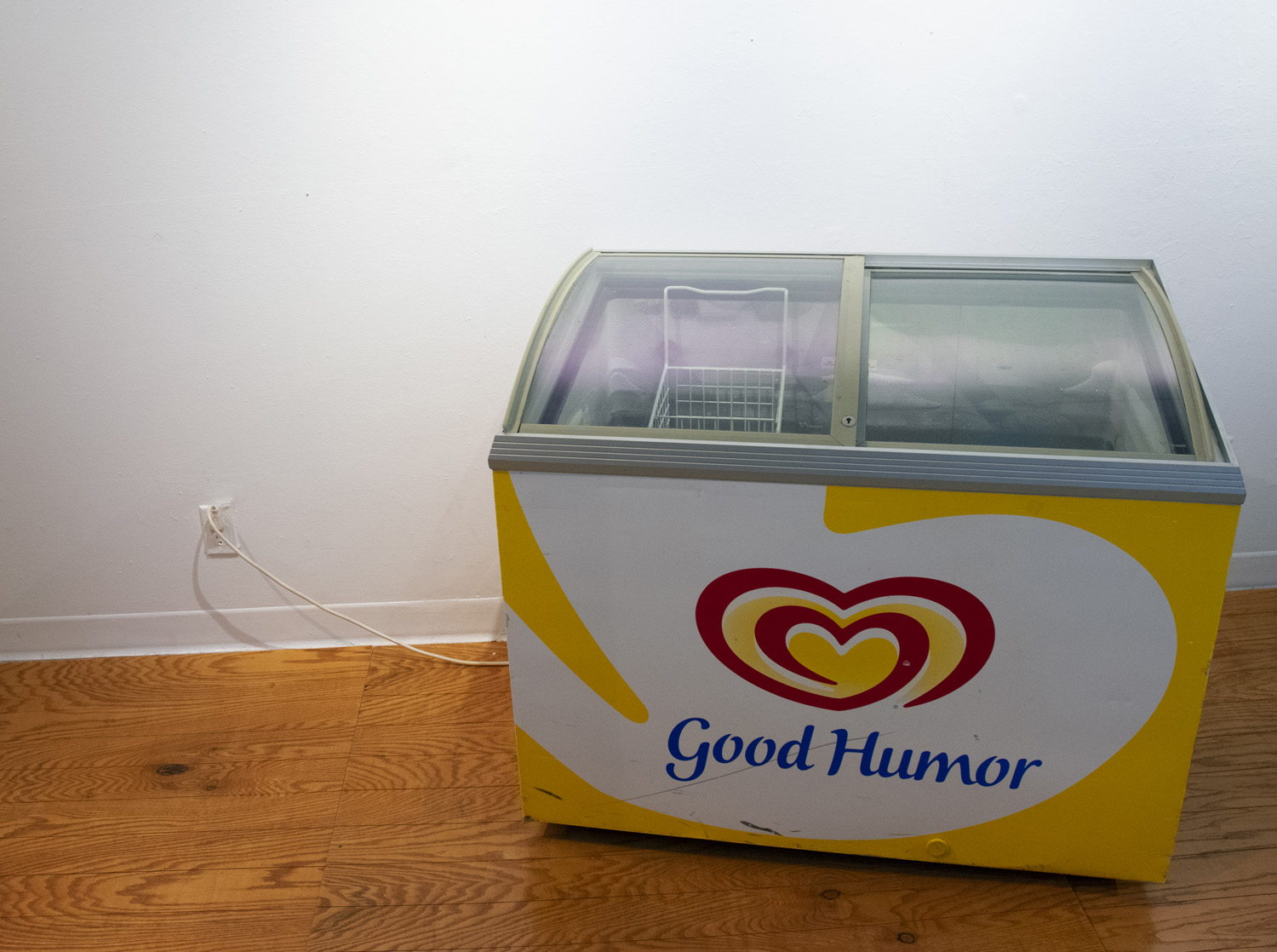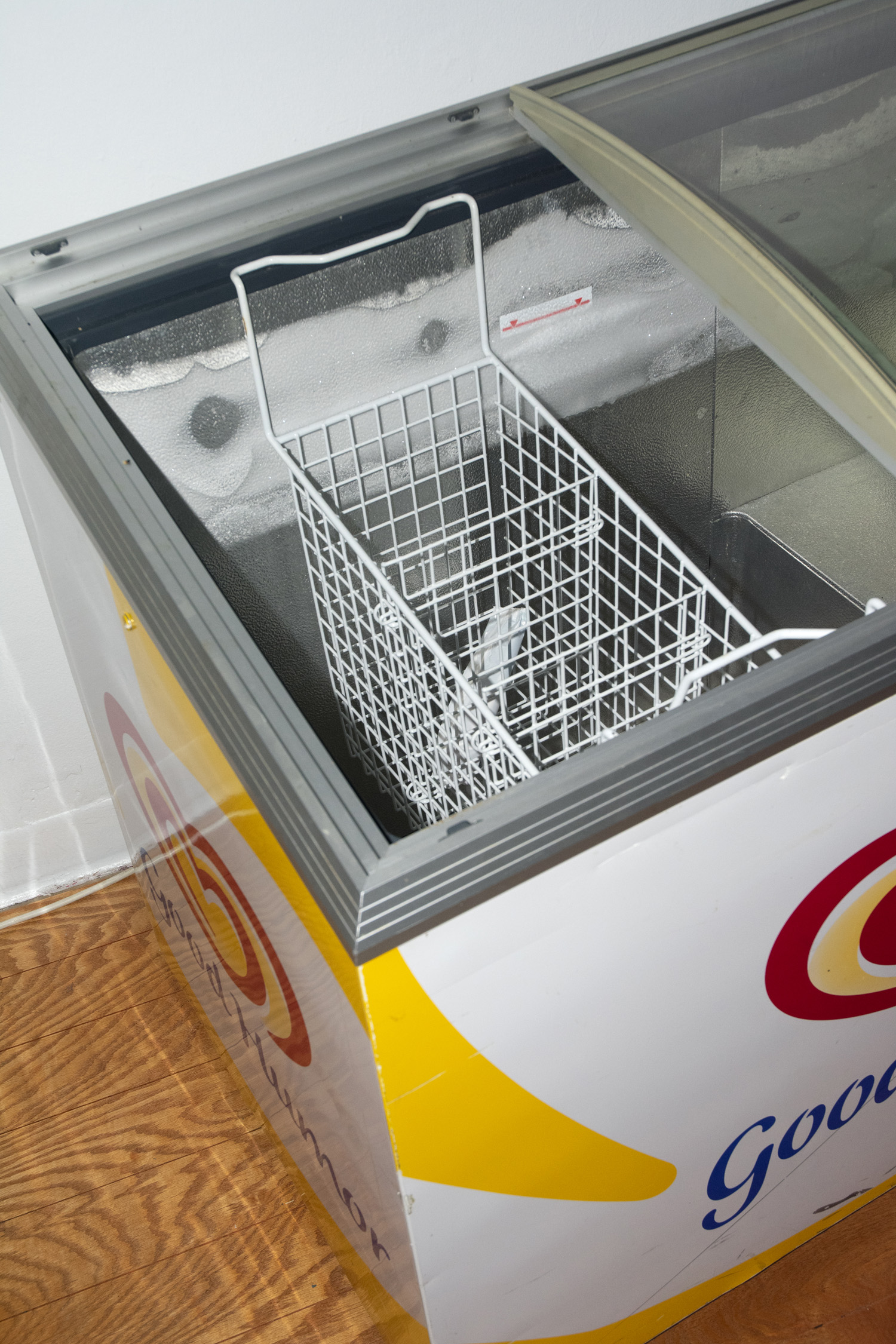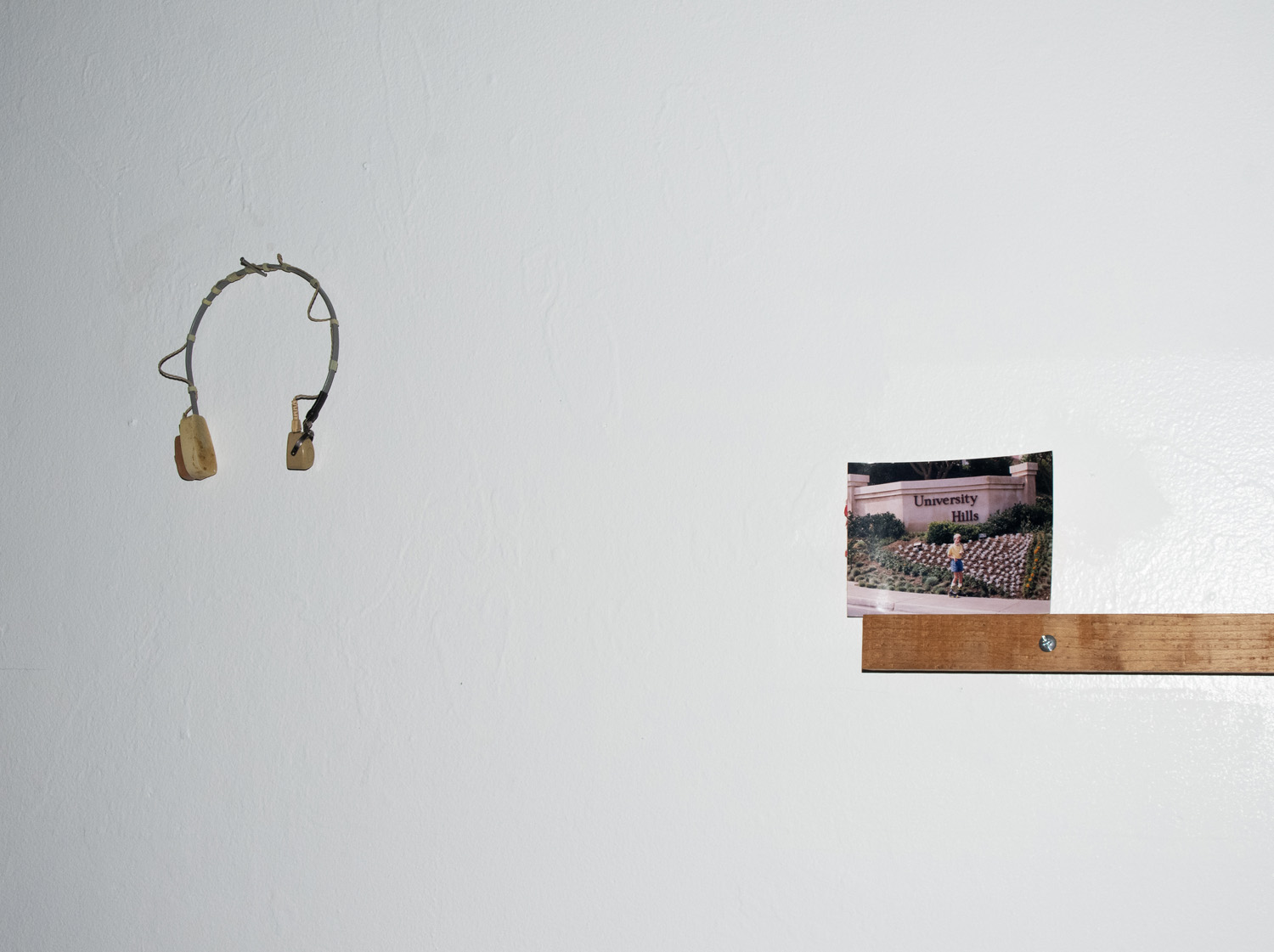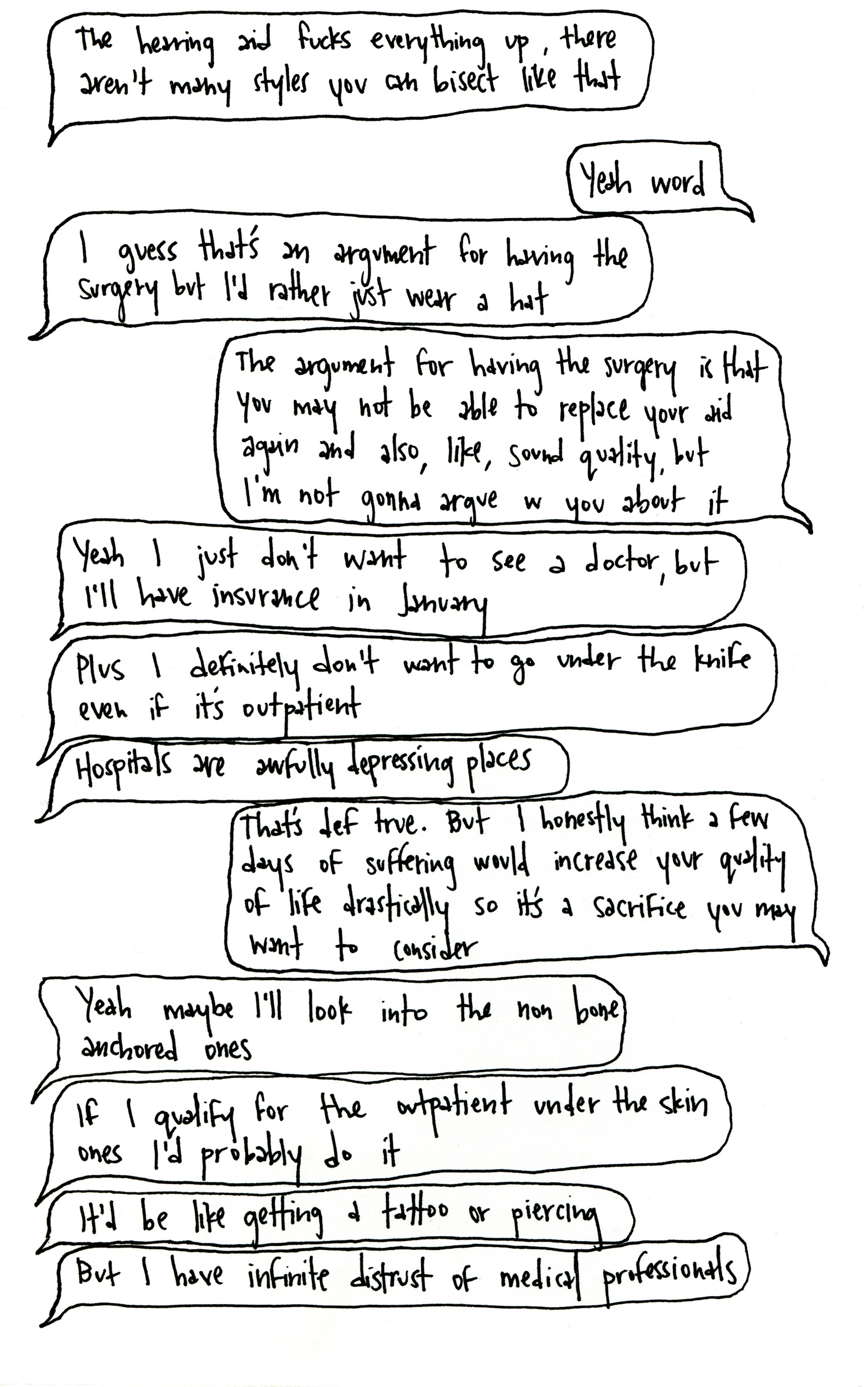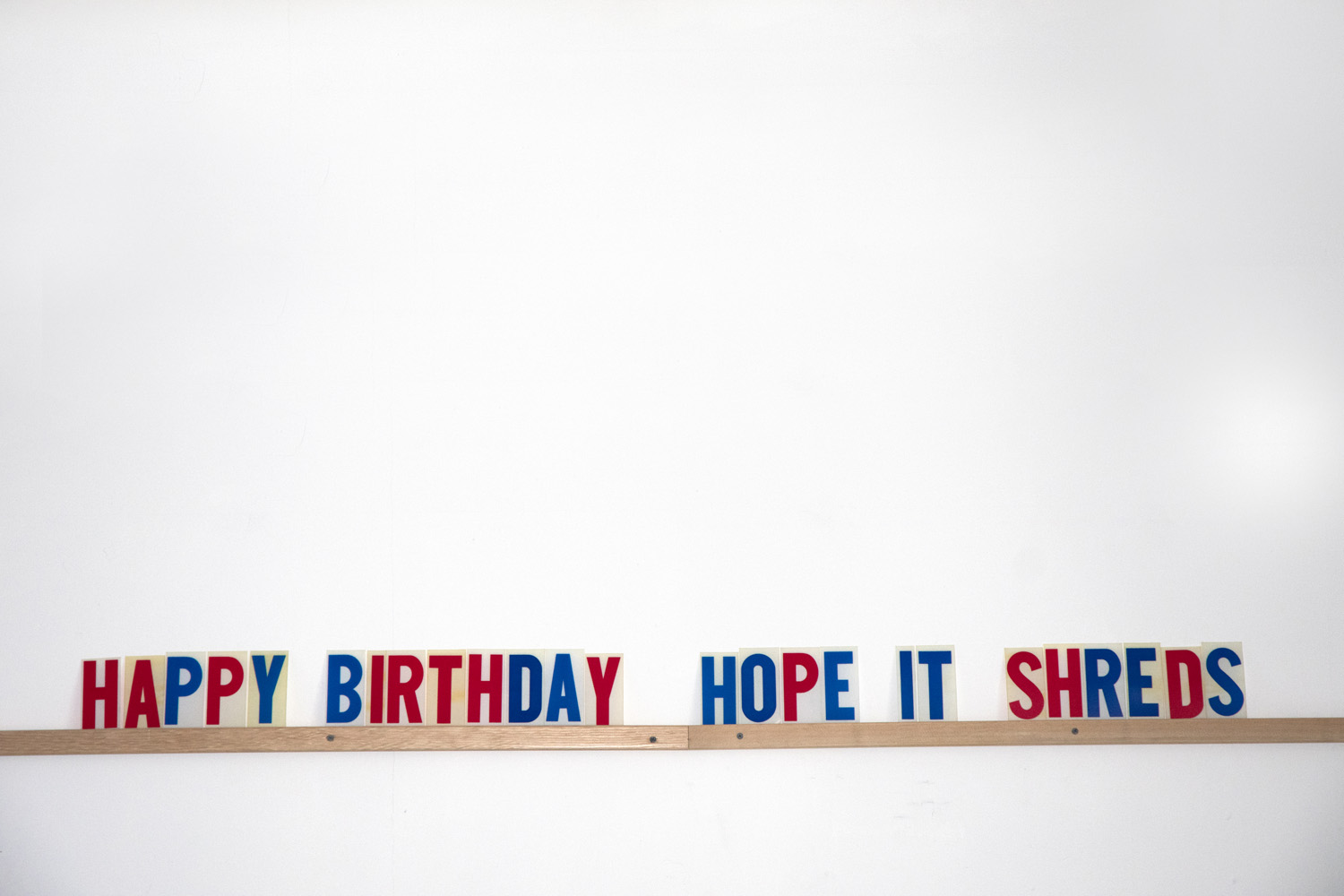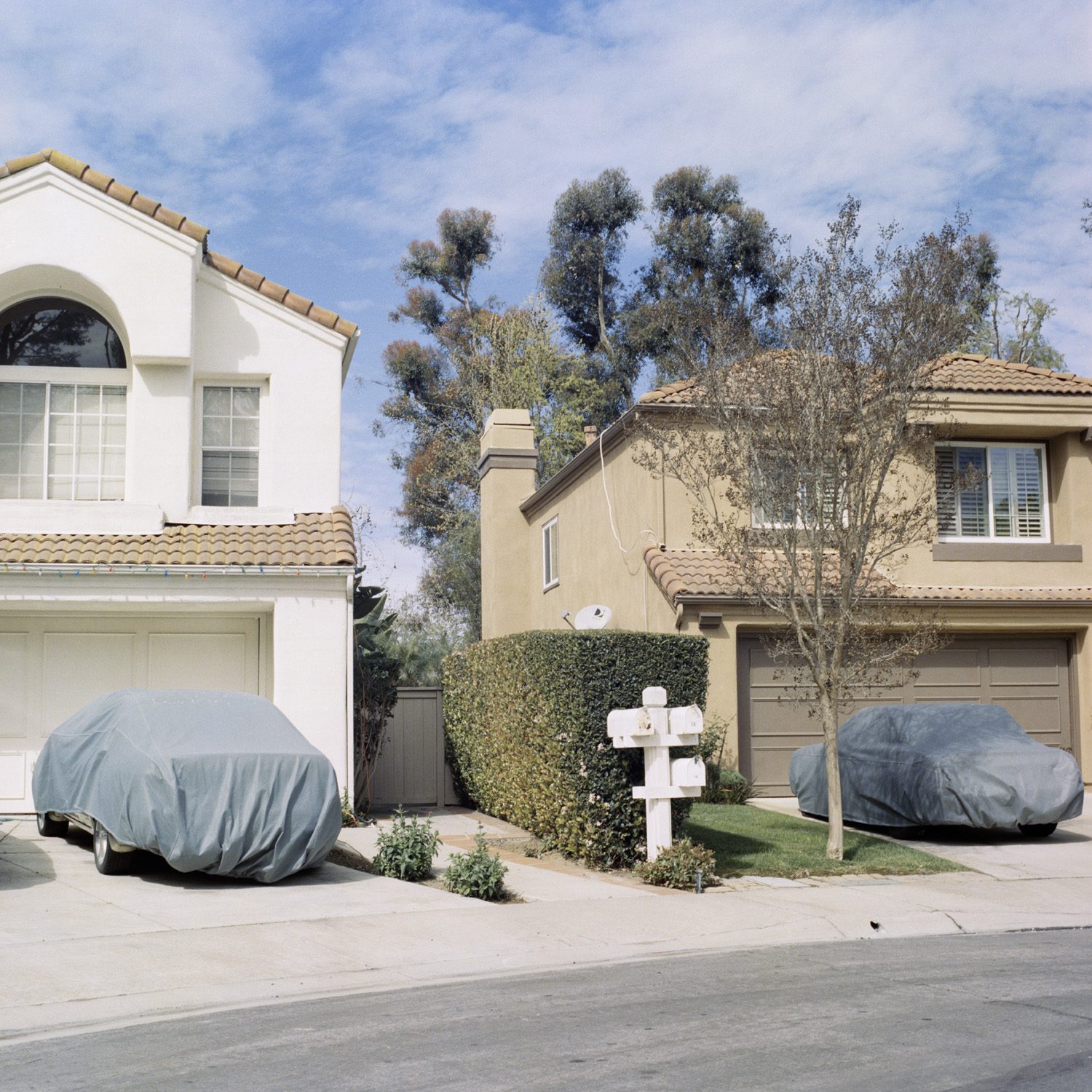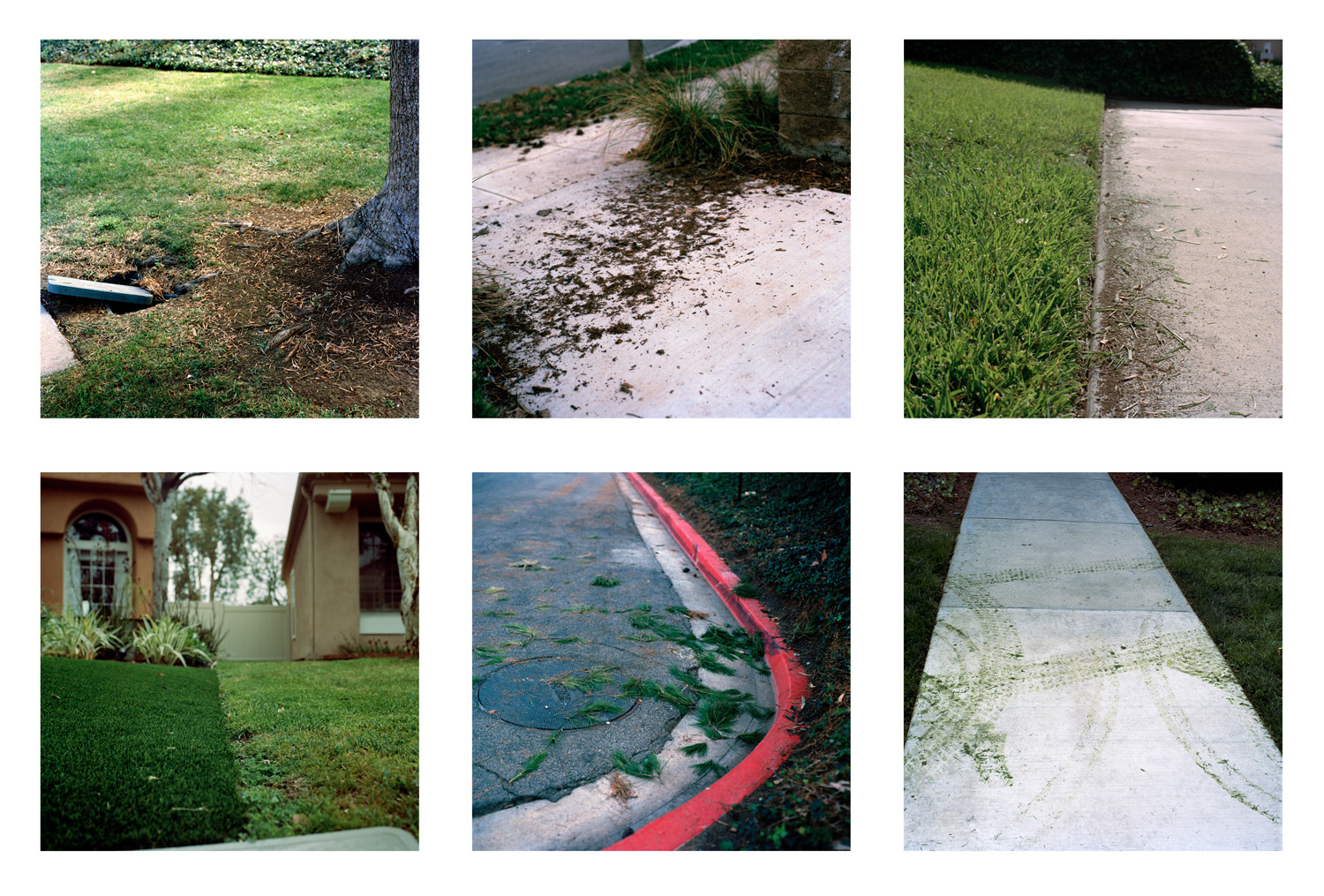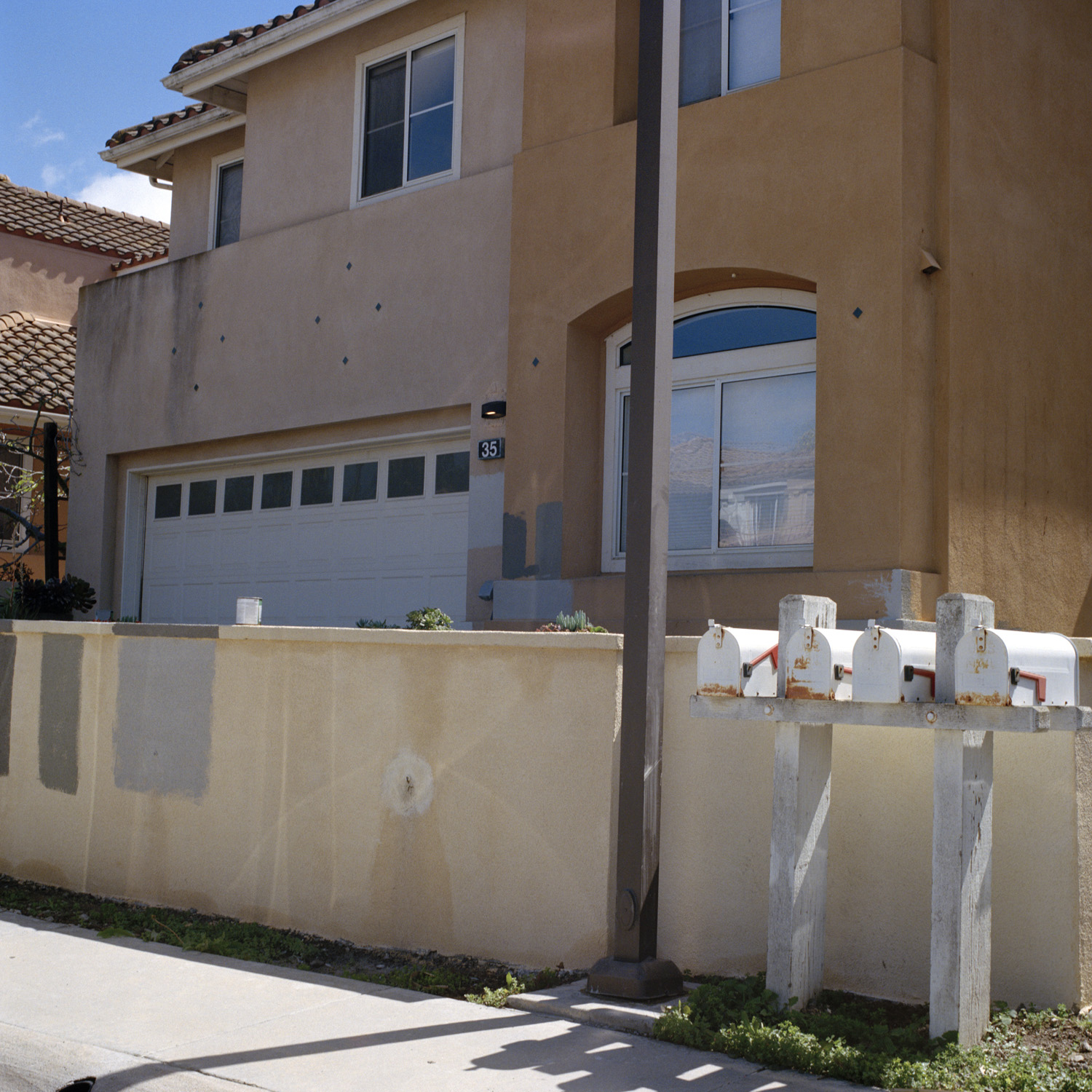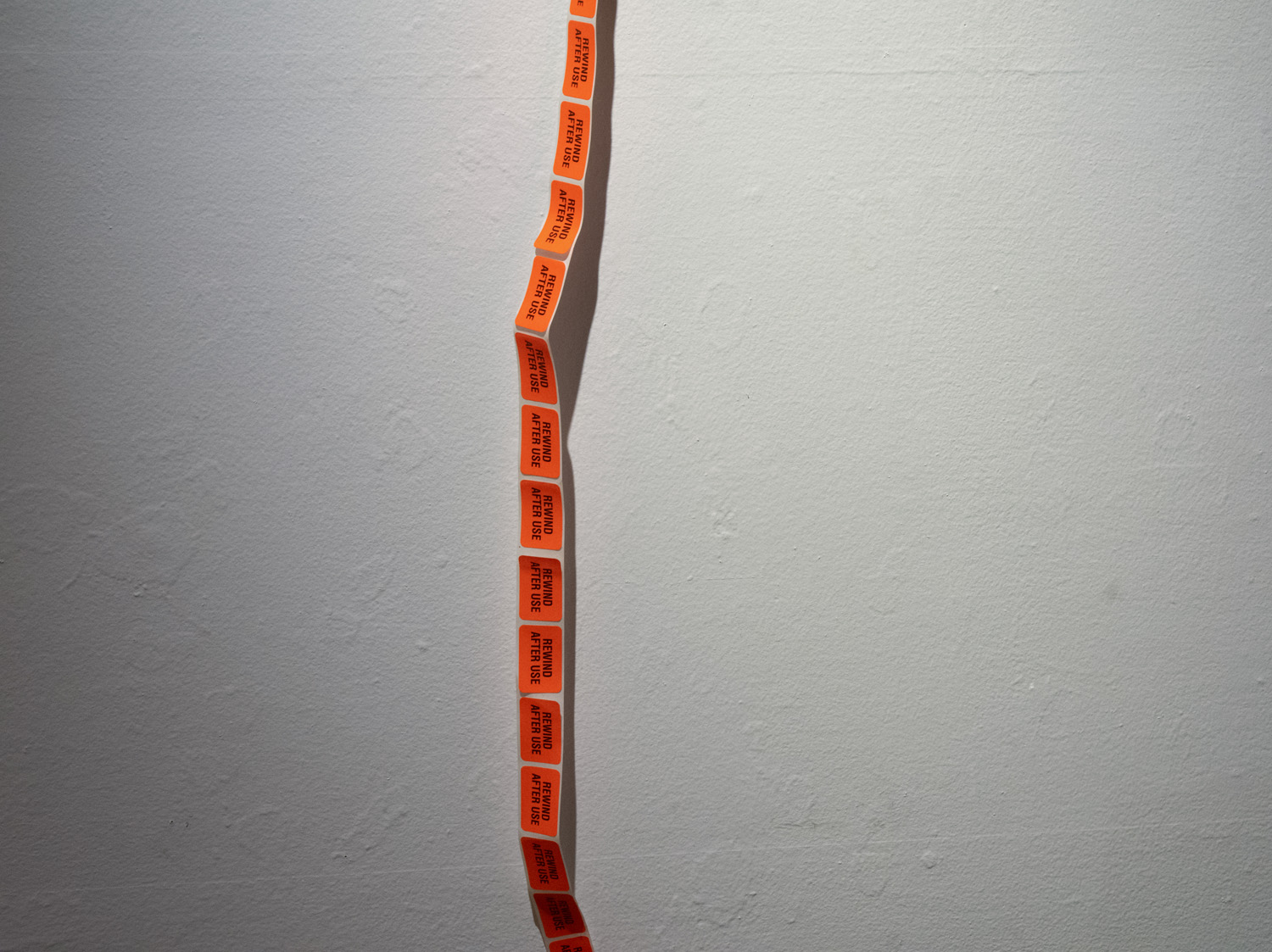Objects that at first scan as rusty bricks of consistent size and inconsistent materiality reveal themselves to be concrete castings from VHS “Squeeze & Shake” rental sleeves, effigies not of the technology of the video cassette but of the vessels that protected them. These unfussy artifacts recall the chronologically recent but reasonably inaccessible space of the video rental store, a browsable archive curated not by algorithm but still shaped by the invisible hands of capital and regional demand.
A novelty freezer seems plucked from an understocked bodega in winter and placed in the gallery: one Popsicle remains in stock, cradled in a gridded basket. An elaborate armature designed to keep one small, sugary treat in edible cryo-stasis, lest someone has an off-season craving. A low sound reverberates from the aging freezer, this coffin of Good Humor—simultaneously peaceful and effortful.
Elsewhere in the gallery, an outmoded headband-style hearing aid emits a less pleasant feedback noise, straining to amplify the tone of the room for an invisible audience of one: the artist’s brother, ephemerally referenced in recreations of text exchanges and a snapshot torn from a scrapbook. Images on the walls document the Southern California suburb where the artist and his brother were raised, traces of a neighborhood forever simultaneously degenerating and regenerating. Evidence of activity stands in place of any identifiable human subject: paint samples, in community board-approved shades of white and tan, dry on a worn condominium, while tire marks streak grass from lawn onto sidewalk.
In Imaginary Archives, Julia Bryan-Wilson writes, “As there are many kinds of queer histories, so too are there many types of queer archives: banal ones, tender ones, bureaucratic ones. But perhaps the queerest things about archives are their silences—their telling blanks and perversely willful holes.” Doran Walot’s thesis exhibition brings together objects and images that reference bygone common commercial spaces and pieces that specifically recall his lived experience. The act of browsing shelves of VHS tapes, the passing of Walot’s brother, a solitary Popsicle, documents of years of a suburb’s evolution—these are incongruous losses bound by a darkly comic shared sensibility.
Walot’s work appears to direct attention to the lack of information through objects identifiable with a feeling, memory, or history—information that can't be transmitted fully. Rather than attempting to make the viewer feel his feelings or know his thoughts, these objects and photographs bridge the gap of a common bond of disconnectedness. We can come close to knowing each other but there are limitations to empathy.
